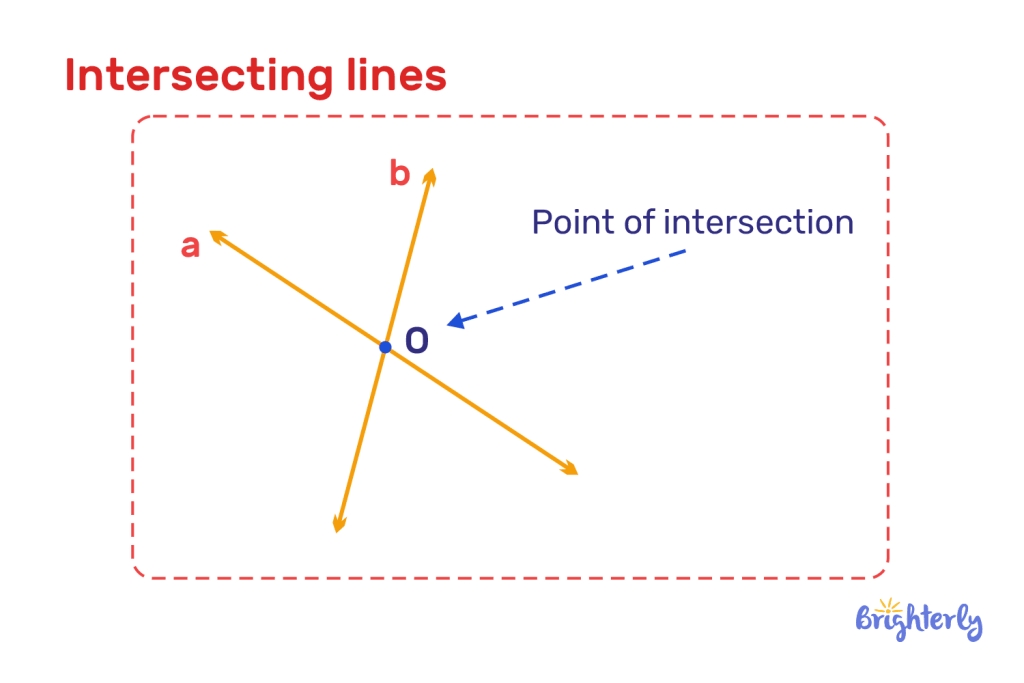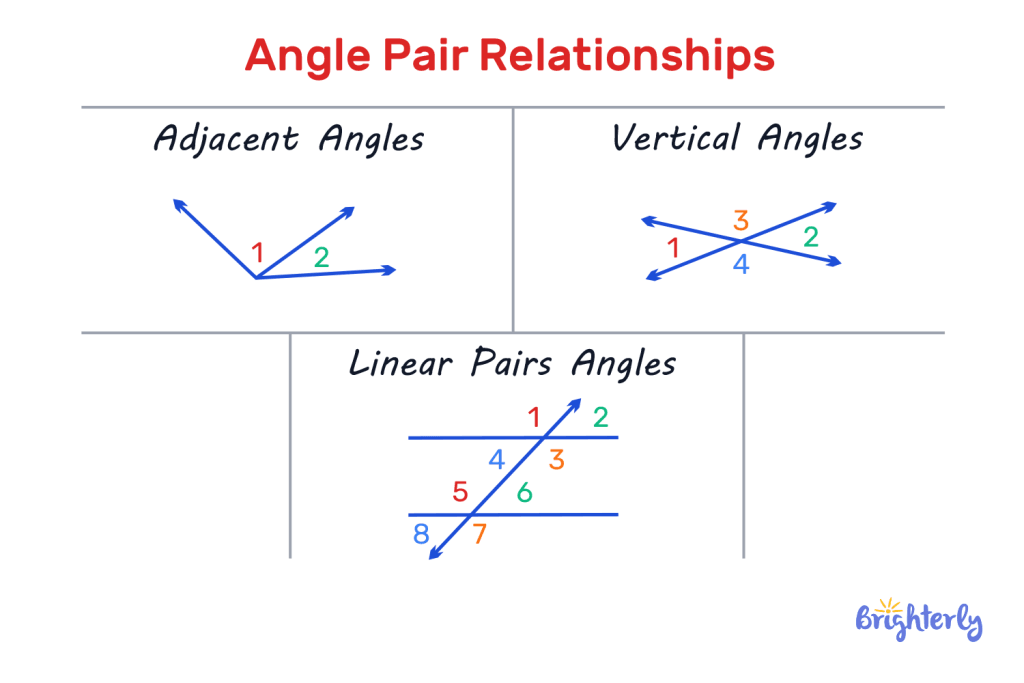Intersecting Lines – Definition, Properties, Examples
reviewed by Rachelle Bencio Yu
Updated on October 28, 2025
In today’s informative and educational journey with Brighterly, you’re going to learn everything you need to know about intersecting lines.
Here, we’ll explore the intersecting lines definition geometry, their properties, and how they differ from non-intersecting lines. We’ll also provide some practice questions so you can master the topic. Let’s dive in!
What are intersecting lines?
The intersecting lines definition refers to two (or more) lines that cross one another at a single point. This point is called the point of intersection. These lines only share this one point in common, which is why one way to remember intersecting lines is to think of them as paths that meet.
When angles intersect, they form 4 angles at the point of intersection. Different types of line intersections form different types of angles, which we’ll cover later on.

Properties of intersecting lines
There are some interesting properties that define intersecting lines, as well as certain types of angles they create.
- Vertical angles: These are angles that are opposite one another at the point of interception. No matter the length or slope of your lines intersecting, these angles will always be equal.
- Adjacent angles: These angles are next to one another, sharing a common side and vertex. When combined, these angles will always add up to 180°.
- Linear pairs: Linear pairs are angles that are formed on a straight line by two intersecting lines. These angles will also always add up to 180°.

Difference between intersecting and non-intersecting lines
The difference between intersecting and non-intersecting lines is that two lines intersecting will meet, while non-intersecting lines will never meet.
Non-intersecting lines, also known as parallel lines, will never meet, no matter how far they stretch.
Non-intersecting lines
Once more, non-intersecting lines are lines that will never meet, even if they stretch infinitely. Usually, they are parallel lines – meaning they are at the same slope and equally distant apart. Skew lines also belong to this type, referring to the lines that feature on a different face of a 3D object, meaning they are on a different plane and can’t ever meet.
Intersecting lines in real life
Intersecting lines are more than a mathematical concept – we see them everywhere in day-to-day life. Here are just some intersecting lines examples in real life:
- Roads and sidewalks that intersect
- A pair of scissors
- Hands on a clock
- The letter X
Intersecting lines examples
Now, let’s look at some mathematical examples of the intersecting line:
- Circles and lines can either intersect at one point (a tangent), two points, or not at all
- Two lines with different slopes on the same plane (i.e., a 2D surface) will always intersect
- Parallel lines will never intersect
Practice questions on intersecting lines
Now, it’s time to try your hand at some practice questions. Try out the puzzles below and write your answers down to test your knowledge!
- You have two lines with the following slopes:
y = 2x + 1
y = -3x + 4
Do these two lines intersect?
- Plot out the following line slopes:
y = x – 1
y = -2x + 5
Identify the point of intersection between these two lines
Conclusion
Congratulations, now you are a master of intersecting lines! You understand the intersecting meaning, intersecting line properties, and some examples, both in real life and math. Understanding intersecting lines is key to areas of math, including algebra and geometry, so this knowledge will set you on a path to success.
Frequently asked questions on intersecting lines
What is the definition of intersecting lines?
The definition of intersecting lines is two lines that meet at a certain point, called the point of intersection. In order to intersect, lines must not be parallel or skew lines.
What does intersecting lines look like?
Intersecting lines can look different depending on their slope. Commonly, they can look like a + sign, which means all angles are 90° (and the lines are perpendicular). They could also look like an X or a T, if the lines intersect but do not cross.
Are all intersecting lines perpendicular?
No, not all intersecting lines are perpendicular. However, all perpendicular lines will intersect if they stretch infinitely. This is because they will meet to form a right angle. They can either cross or simply meet at that right angle.
Are perpendicular lines always intersecting lines?
Yes, perpendicular lines are always intersecting lines. By definition, perpendicular lines are lines that intersect to form right angles (aka 90° angles). All lines that meet one another are intersecting lines.
What are 5 examples of intersecting lines in real life?
5 examples of intersecting lines in real life are:
- A pair of scissors
- A crossroads, where two roads in differing directions meet one another
- A sidewalk intersection, where two sidewalk paths meet one another
- The corners of a table
- Hands on a clock







